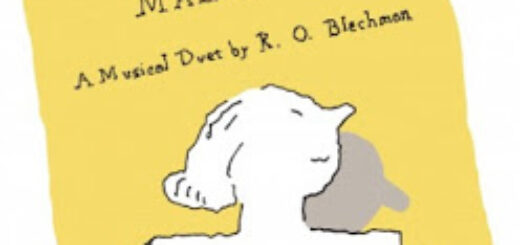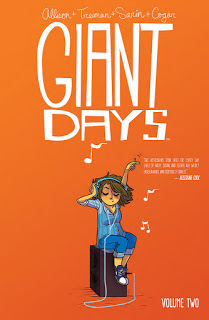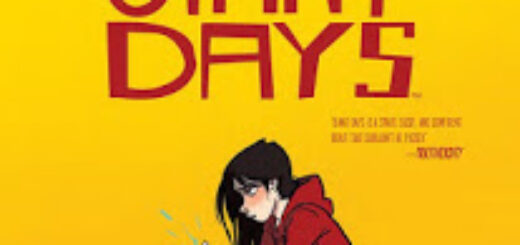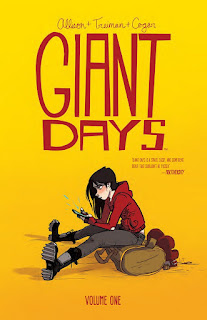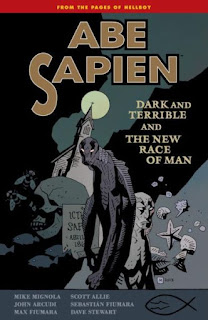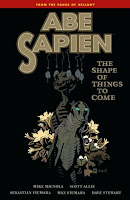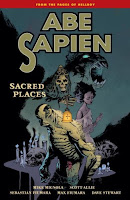Years of Future Past #4
Rough going. There’s some novel plot twists, but everyone is such a cardboard cutout here that I have trouble caring. An exemplar of the sort of comic I really need to stop spending $3.99 on.
A-Force #3
Effective superheroics, with little more to be said. Art felt a bit uneven between two different inkers, and the plot is starting to lose me, though I’m not sure if that’s an A-Force problem or a Secret Wars problem. Either way, at best adequate.
Mercury Heat #2
Still not sparking; the underlying concepts are interesting, and get moments of good play, but I suspect this is one where I’ll like the second arc, once the cards are on the table, more than the process of laying them there. Luiza’s hatred for her own skillset is by far the most compelling aspect, but the book is being slow in establishing that in favor of a lot of worldbuilding, which isn’t bad, but isn’t quite amazing either.
Secret Wars #5
On the original release schedule, this sort of exposition slab of an issue, excluding almost all of the cast in favor of a tight focus on Doom and Valeria, would probably have been a bold and interesting more. Under the increasingly glacial pace of Secret Wars, I’m well past just checking my watch and wondering if it’s October yet, not least because the odds seem certain that the All-New All-Different Marvel relaunch will start before Secret Wars #8 ships.
Grant Morrison’s 18 Days #2
Morrison is now one of three writers, so we’re pretty clearly transitioning from stuff he actually did to stuff he at best has notes for. We’re also pretty clearly moving from where his overly elaborate work resetting the myth into a Jack Kirby knockoff is the focus to a retelling of a classic of world mythology. On the whole, then, an improvement.
Doctor Who: Four Doctors #1
An endearingly frothy summer event for Titan’s Doctor Who line. Cornell gets to business quickly and engineers a good cliffhanger, and the Keys of Marinus callback is a nice treat as well, but I’m less than convinced by his Tenth/Twelfth exchanges, which seem to capture neither Doctor particularly well. Still, fun. The “Clara is Slytherin” gag’s particularly nice. Edwards’s art is capable, though marred by occasionally excessive photoreference, which leads to a jarring difference between his everyday Tenth Doctor and the one who appears in a couple of close-ups.
Doctor Who: The Eleventh Doctor #15
It feels like this comic has done a few climaxes more than is earned, but as the proper, final issue of Year One (and Ewing’s final bow on the title) it’s a good one that shows how well sketched this set of companions is. I don’t pretend to understand the Source anymore, but this was fun and moving, and really is one of the best runs of Doctor Who comics ever.
Stumptown #7
As is often the case with Stumptown, I suspect it will read better in trade, but this is a lovely and world-grounded PI yarn that hums along entertainingly before sparking with real charm at the end. I look forward to the inevitable double crosses and elaborate betrayals.
The Unbeatable Squirrel Girl #8
Very much what you’d expect from this comic, which is to say, hilarious brilliance. The bottom-of-page gags are such a small thing, but they really do add a sense of heft and size to the comic, and the sheer quantity of humor here really makes this a reliable treat. Glad it’s coming back in October.
Uber #27
Something between a final issue for the run of Uber that’s been going on so far and a #0 for the forthcoming second series, which features a major and intriguing change of focus. So far much of the book’s dark brilliance has come from its reworking of British war comics, but now there’s going to have to be a change in what sort of thing we talk about, and I’m interested in seeing how Gillen moves to a different comic tradition for the next arc. All very exciting stuff, in other words.
Phonogram: The Immaterial Girl #1
Gillen’s got a bit of an imperial phase going across the last two weeks, bringing Uber to a major break, kicking out a highly acclaimed one-shot of WicDiv, and now starting the last run of Phonogram, which is terribly beloved and terribly good as well. A bit outside of my wheelhouse; love the magic, but none of this is actually a musical touchstone for me, though it surely could have been for some alternate universe me. As a first issue, it’s in many ways a showpiece for McKelvie, who returns to old stomping grounds with new skill. Breaking from WicDiv for an arc to do this is shrewd as fuck.
as it’s sumptuous.
Providence #3
Moore casually and off-handedly reels out the sort of deft textual stunt that’s why he’s Alan Moore, suddenly bringing together strands of his own plot and Lovecraft’s original work in an unexpected and disturbing way. The issue’s a slow burn leading up to a scintillatingly good and ominous dream sequence. We’re ramping up to some real classics of Lovecraft, doing a one-two punch between this issue and next of “Shadow Over Innsmouth” and “The Dunwich Horror,” and the sense of scale is increasing nicely as well. One can only imagine where Moore intends to go over the next nine issues.
Injection #4
Ellis finally kicks off here, which is consistent with the longform game he’s been playing with this phase of his career. I love the relationship between the past and history here, and the phrase “the speed of nature.” Shavley and Bellaire are doing phenomenal work here, capturing grandeur and weirdness in equal measures. The highlight of Ellis’s current batch of comics, this one.
![]()

